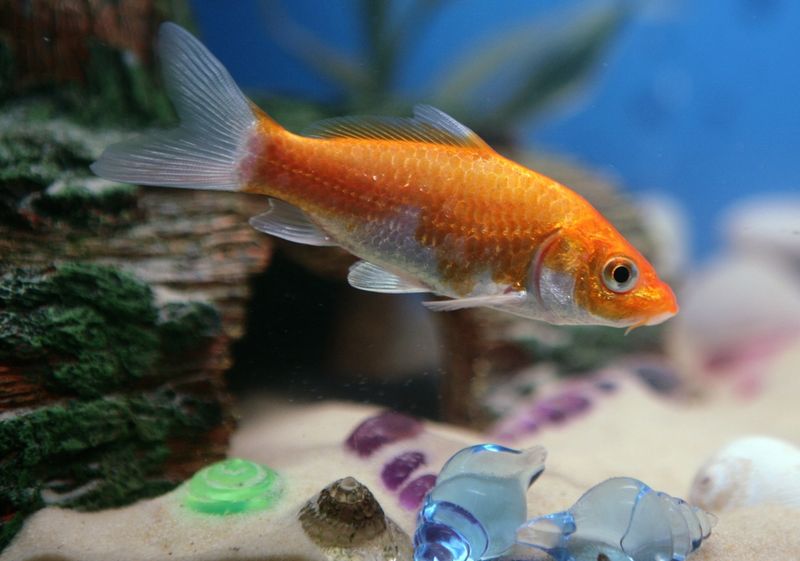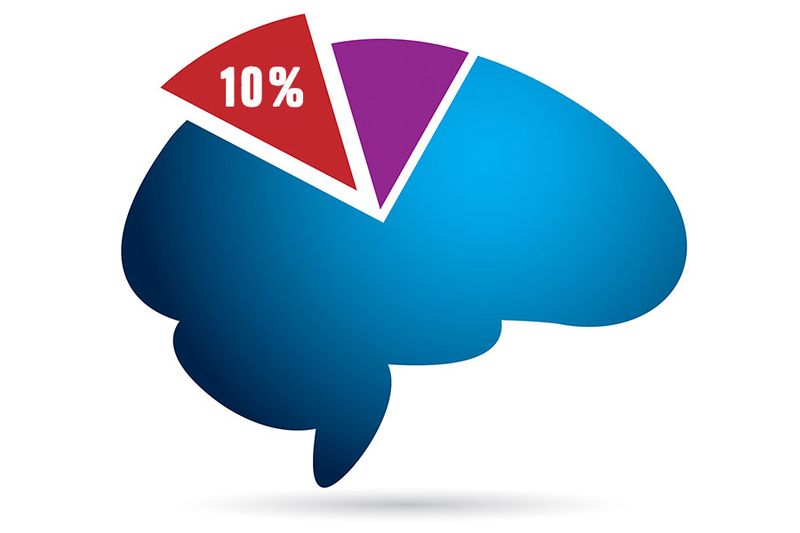Elementary school is a time of wonder, learning, and, sometimes, misconceptions that stick with us into adulthood. Here are ten common myths you might have believed without question.
1. Goldfish Have a 3-Second Memory
Ever thought your goldfish had a memory like Swiss cheese? Contrary to popular myth, these aquatic creatures actually have a memory span that lasts far longer than a mere three seconds. Research has shown that goldfish can remember tasks and routines for months, showcasing a learning capability that belies their small stature.
It’s not just a fanciful idea—it’s grounded in science. These little pets can be surprisingly intelligent, engaging, and responsive, making them delightful companions beyond their shimmering scales.
2. Cracking Your Knuckles Causes Arthritis
Knuckle-cracking might drive your family up the wall, but will it lead to arthritis? Fear not! While the sound may be maddening, studies have shown no direct link between cracking knuckles and developing arthritis later in life.
The familiar popping noise is simply caused by gas bubbles bursting in the joint fluid, a harmless activity that doesn’t wear down your joints. So, next time someone gives you the side-eye for cracking your knuckles, you can confidently tell them it’s not as bad as it sounds.
3. Swallowed Gum Stays in Your Stomach for 7 Years
Who hasn’t heard the cautionary tale that swallowed gum lingers in the stomach for seven years? Rest assured, this is nothing more than an urban legend. Gum may be resistant to digestion, but it doesn’t stick around in your stomach for years on end.
Instead, it moves through your digestive tract and exits like most other consumed items. While it’s not advised to make a habit of swallowing gum, doing it occasionally won’t lead to a sticky situation lasting years.
4. Humans Only Use 10% of Their Brains
Ever wondered if you could unlock hidden brain powers with just a little more effort? The notion that humans use only 10% of their brains is a myth that’s been debunked time and again.
Modern brain imaging techniques have confirmed that we utilize virtually every part of our brain, even during rest. Every region has a known function, contributing to our complex, daily activities. So, next time you hear this claim, know that your brain is working full-time, not part-time.
5. Bats Are Blind
Picture a bat zooming through the night, navigating with perfect precision. Despite the age-old myth, bats are far from blind. In reality, they possess excellent eyesight, which they often use in conjunction with echolocation.
Whether hunting insects at night or avoiding obstacles, bats rely on both their vision and sound waves. This dual capability makes them fascinating creatures of the night, perfectly adapted to their dark world. Next time you see a bat, appreciate their remarkable sensory skills.
6. Sugar Makes Kids Hyperactive
Think back to those sugar-fueled birthday parties where kids bounced off the walls. The belief that sugar causes hyperactivity is widespread, yet scientific studies have found no direct link between the two.
Many factors contribute to children’s lively behavior at parties, such as excitement, environment, and expectations. While sugar does provide energy, it’s not responsible for turning kids into little whirlwinds. Parents can rest easy knowing that moderation is key to dietary balance.
7. The Great Wall of China Is Visible from Space
Ever imagined spotting the Great Wall of China from space? This popular myth doesn’t hold up under scrutiny. Although it’s a monumental structure, the wall’s narrow width makes it hard to distinguish from the vast Earth surface.
Astronauts have confirmed that the wall blends too well with its surroundings to be easily visible. Instead, it’s the dazzling city lights and major natural formations that stand out from space. The Great Wall remains an impressive feat of engineering, just not a visible one from orbit.
8. Hair and Nails Continue to Grow After Death
The idea of hair and nails growing after death seems like a scene from a horror movie, but it’s purely an illusion. As the body dehydrates, the skin retracts, making hair and nails appear longer.
This myth taps into our fascination with life and death, but the scientific explanation is far less eerie. In reality, cell division ceases after death, putting an end to growth. So, the next time you hear this creepy tale, you’ll know there’s no truth behind it.
9. Lightning Never Strikes the Same Place Twice
Feel safe standing where lightning just struck? Think again! The idea that lightning never strikes the same place twice is a shocking misconception. Tall, isolated structures are frequent targets for lightning strikes.
In fact, some places, like the Empire State Building, endure multiple strikes during a single storm. Understanding this myth helps in appreciating the unpredictable nature of lightning and the importance of safety during storms. Always seek shelter, regardless of previous strikes nearby.
10. Eating Carrots Gives You Super Night Vision
Remember when you were told that munching on carrots would turn you into a nocturnal superhero? While carrots are indeed rich in vitamin A, which is crucial for maintaining healthy vision, they won’t grant you night vision superpowers.
This idea actually gained traction during World War II as a bit of propaganda to explain away the success of British pilots. Despite the truth, the tale persisted in schoolyards, inspiring kids to munch on this crunchy vegetable, hoping for bat-like night vision.
So, while carrots are fantastic for your eyes, don’t expect them to light up the dark. Keep a flashlight handy instead!










